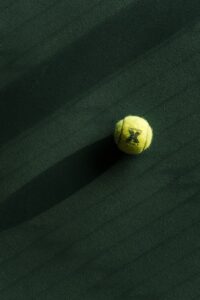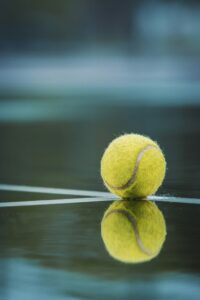The Science Behind Padel Ball Construction: What Makes a Quality Ball?
3 min read
The Science Behind Padel Ball Construction: What Makes a Quality Ball?
As a seasoned padel player, I’ve spent countless hours studying and dissecting every aspect of the game. One crucial element that often gets overlooked is the humble padel ball. The ball you choose can greatly impact your game, and understanding the science behind its construction can elevate your overall playing experience. So, let’s take a closer look at what makes a quality padel ball.
The Outer Shell: A Padel Ball’s First Impression
When you first pick up a padel ball, you’ll notice its outer shell, typically made of high-quality rubber. This rubber exterior plays a fundamental role in determining the ball’s durability and bounce. Manufacturers ensure that the outer shell provides the ideal combination of grip and resilience, allowing the ball to rebound predictably off the padel court walls.
During intense padel matches, the ball experiences immense pressure and friction. Hence, premium balls undergo rigorous testing to withstand repeated impacts without compromising their shape or material integrity. A reliable padel ball must retain its quality over time, ensuring consistent performance from the first serve to the final match point.
The Inner Core: The Heart of a Padel Ball
Now, let’s delve into the secret ingredient: the inner core of a padel ball. Most balls feature a rubber compound at the center, incorporating a blend of synthetic or natural materials. This inner core determines the ball’s weight, compression, and overall feel.
Manufacturers strive to strike the right balance between various factors to create an ideal padel ball. A ball with too much compression might feel heavy and difficult to control, while one with too little compression may lack the desired bounce. A well-designed inner core ensures that the ball provides the perfect mix of playability, allowing players to execute all their shots effortlessly.
The Secret Sauce: Pressurization
Just like a perfectly cooked dish, padel balls require the right amount of pressurization. Manufacturers maintain strict standards to ensure consistency across all balls. Pressurizing the ball effectively alters its bounce and responsiveness, providing players with the desired speed and control on the court.
A properly pressurized padel ball isn’t too hard or too soft. It strikes a delicate balance, offering the ideal amount of resistance when it collides with the racket, resulting in a satisfying yet controlled shot. The science behind pressurization transforms a lifeless ball into an animated, lively partner, ready to challenge your skills on the padel court.
Choosing the Right Padel Ball
Now that we’ve explored the science behind padel ball construction, how can you select the perfect ball for your game? The answer lies in understanding your preferences and playing style. A professional player might opt for a ball with a higher bounce and faster speed, while a beginner might prefer a softer and slower ball that allows for improved control and learning.
It’s essential to consider the court surface as well. Different padel courts vary in playing characteristics, such as surface texture and speed. Familiarize yourself with the type of padel ball that suits your chosen court and adjust your game accordingly.
Remember, the padel ball is your partner on the court, and choosing the right one can significantly impact your performance. So, take your time, experiment, and find the ball that perfectly complements your skills and style.
In conclusion, the science behind padel ball construction goes much deeper than meets the eye. Every aspect, from the outer shell to the inner core and pressurization, contributes to the overall playing experience. Understanding these factors can help you make an educated decision when it comes to choosing the perfect padel ball. So, next time you step on the court, equip yourself with the right ball and let the game begin!






